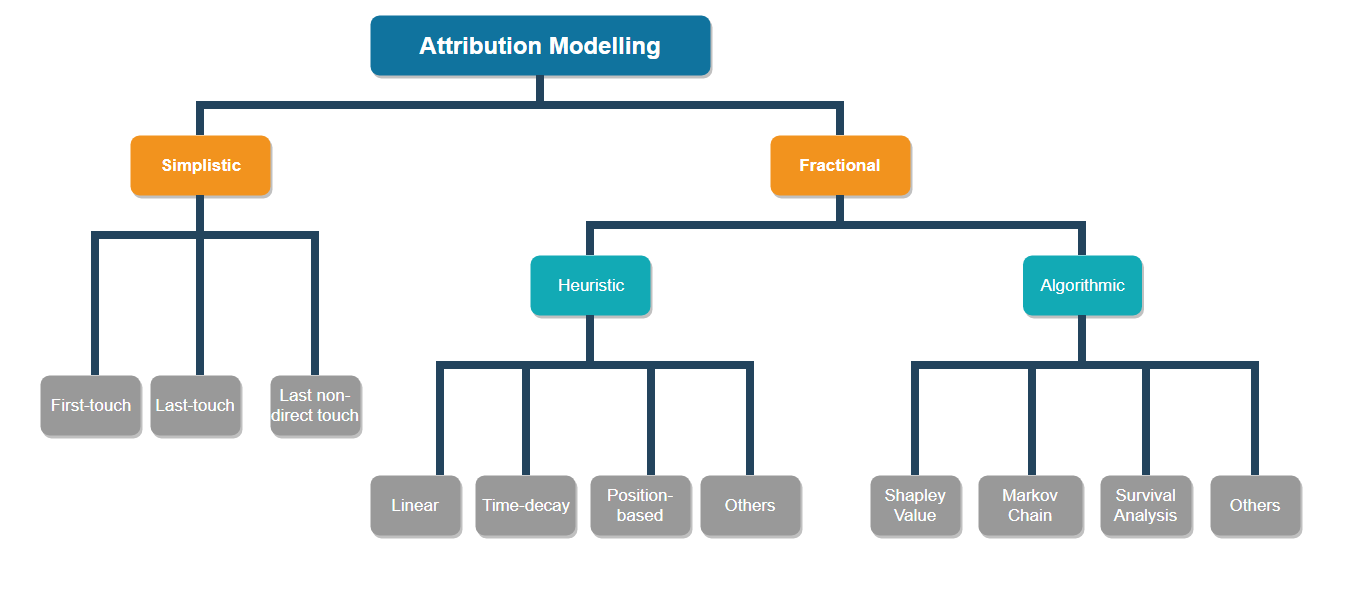3 Types of Attribution
3.1 Group vs. Individual Attribution
Historically, marketers got inspired by the marketing performance and strategies of offline channels such as newspaper and broadcasts, but there were some drawbacks. For example, they could not be used for investigating customer conversions at an individual level.
Marketing attribution in this case was largely done at the group level by aggregating the performance of all users responding via a particular channel. Furthermore it was difficult and often impossible to understand which customers experienced multiple touch points in these offline channels.
Currently, the prevalence of digital marketing provides the marketer with a better way to gain insights on how marketing activities perform at the individual level.
3.2 Simplistic vs. Fractional Modelling
3.2.1 Simplistic modelling
Simplistic models assign complete conversion credit to just a single touch point. A consequence of this is all other touch points in a user’s conversion pathway are effectively ignored.
There are several types of simplistic attribution models, but we mainly focus on two of them, which have been widely adopted. In the Last Touch model, 100% credit for a conversion is assigned to the final touch point which happens before the conversion. In contrast, in the First Touch model, 100% credit is assigned to the first touch point a customer uses in their conversion pathway.
3.2.2 Fractional modelling
Unlike simplistic modelling techniques, fractional modelling determines the ‘fractional’ contribution of each touch point and helps the marketer apply appropriate weights to all channels in a client’s decision-making journey.
Fractional attribution modelling is subdivided into heuristic modelling and algorithmic modelling as discussed in more detail below.
3.3 Heuristic vs. Algorithmic Modelling
3.3.1 The Heuristic model
The concept of the heuristic model, also known as rule-based fractional modelling, is summarised in Jayawardane et. al (2015) who define it as fixed rules to assign the credits to all touch points leading to the conversion.
These ‘rules’ that the heuristic modelling is based on include Linear, Position Based, Time Decay and others which we will explore further in later sections.
Compared to simplistic modelling, heuristic models better capture the contributions of multiple advertising and marketing channels.
3.3.2 The Algorithmic model
Extending the idea of fractional attribution is algorithmic attribution.
Rather than using a rule-of-thumb, an algorithmic model will analyse both converting and non-converting paths customers take and make a probabilistic assessment of each channel’s contribution to a conversion. Often using advanced statistics and machine learning algorithms, algorithmic methods develop custom weightings for each channel based on their effectiveness.
Currently, some popular approaches are Markov Chain models, the Shapley Value and survival analysis. We will take a detailed look into these methods and which are appropriate for your analysis goals.
3.4 Classification of Methods
Below is a useful taxonomy of the commonly used methods for marketing attribution modelling in eCommerce.
